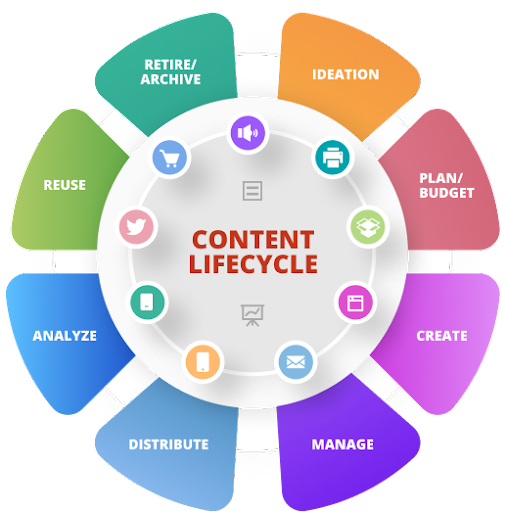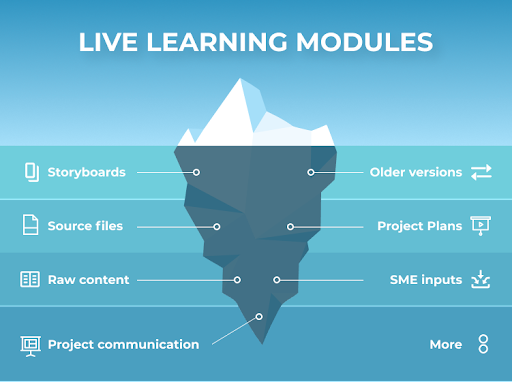Every year, corporate learning and development teams invest, on an average, 40 percent of their organization’s annual L&D budget on various activities related to their learning content. This percentage has not changed significantly for more than a decade.
In an industry that has always been split over how to measure return on investment, this may be the norm, but it is also a cause for concern. On one hand, it is great that organizations recognize the role learning content plays in their talent development initiatives and are willing to invest into it. On the other hand, it is concerning that the quantum of money being poured into the learning content bucket has not seen any significant reduction over the years.
This holds especially true for those organizations that have had a functioning L&D team for 10 years or more. By a conservative estimate, these organizations would have amassed close to or more than 1,000 hours of learning content by now. Do they still need that same volume of new content to be churned out every year? And, although no one has emphatically asked the question yet, can L&D leaders quantify the kind of ROI (against an acceptable benchmark) that these millions of dollars’ worth of content assets are bringing to their stakeholders?
These are uncomfortable questions that we’ve avoided answering for a surprisingly long time. But they beg serious thought. All content, including learning content, has a multi-stage life cycle that it goes through, right from the time it is planned for, to the time it is retired. The space in between the planning and the retirement is called shelf-life.

Ideally, any learning content that an L&D team plans for should have a projected shelf lie. But right now, numbers indicate that most of their content assets are not living up to these projections. Why else would organizations need so much new learning content every year?
Something is broken in L&D
And it’s the way we view our learning content assets and consequently, how we take care of them.
We’ve now moved into an era when L&D is no longer considered a cost center. We have graduated into the investment category. It’s a welcome development. It has eased some of the pressures and constraints that chief learning officers used to operate under for years and has brought an influx of funds to spruce up L&D investments.
However, when it comes to learning content, most of these funds have been used to upkeep the content with which the learners interact — the live learning modules. We’re excited about our new authoring tools and learning experience platforms. We’re breaking new grounds in learning experiences. But we keep overlooking the fact that these live learning modules are only the tip of the learning content iceberg.

Learning modules are the stars of our training initiatives. They get all the awards and accolades. But without their supporting cast, they would all have a very short run in the limelight. That supporting cast constitutes the rest of the learning content iceberg — all the peripheral content assets that we generate when we create our learning modules — the raw content from subject matter experts, the storyboards created by our instructional designers, project communications, quality assurance reports, project plans, source files and quite a lot more.
In the last several years, I have interviewed many learning leaders from leading organizations on how they govern their learning content. Every one of them had a concrete strategy for their star content. No one had anything significant in mind for their supporting cast. When asked, “What happens to your supporting assets once a learning module is live on the LMS?” I have received responses such as:
“They go sit on a local drive.”
“We have a cloud subscription service where we upload everything.”
“We have a SharePoint portal for this, although the folders have become a bit messy.”
“I have several portable hard drives where I keep these files.”
Relatable? The follow up question is, “And then what happens?” to which almost everyone draws a blank. At an industry-level, there is no standard best practice regarding how this content should be handled. It is one of our biggest blind spots and the reason why learning content is one of the most resource-draining and effort-intensive functions of any L&D team.
How? Consider these two scenarios:
Scenario one: You have rolled out a premium learning experience in the form of your training module. It sits on your cutting edge LXP and generates a high-level of learner engagement. For about a year. Then, something changes, and the business requests you to update the module. To do this, you need the storyboards, the source files, and the original raw content.
All your supporting content for this project is sitting on a local hard drive that also houses similar assets of thousands of hours of learning. What could go wrong?
Here are some possibilities:
- You cannot locate the source files.
- You have located the source files, but you are not sure they are the latest versions.
- You have found the source files and are fairly sure that they are the latest version but somehow, they don’t match the final learning module.
- A vendor had created the learning module for you, and you forgot to take a handover of the source files from the vendor. Worse, you cannot contact the vendor.
These are very common scenarios for learning content managers, and the most common way out of them is to recreate the same learning module once again. From a strategic point of view, this means, not only did the first learning module not live up to its promised shelf life and was retired early, but it also means that the organization spent roughly 170 percent the amount of what they should have spent on a training initiative within a span of a year. From a content governance perspective, the L&D team now owns two almost identical learning modules, one of which is no longer usable.
Scenario two: We’re in an age where technology changes at the blink of an eye and businesses need to act fast and adapt or risk being left behind. Something along that line has transpired and your LXP service provider has decided to sunset their existing authoring tool and roll out a new one. You now must act fast and migrate all your learning content from the old authoring format to the new one. It’s a monumental task. But it’s made even more monumental by the fact that all your supporting content assets are stored in several portable hard drives, and you must sort through them to find the storyboards and source files for the soon-to-be obsolete modules.
You don’t have the time to manually search for what you need. So, you accept your vendor’s recommendation of decompiling your live modules, and then rebuild them in the new authoring environment. It’s the easiest way. It is also a massively expensive way; and it happens way too often.
Both scenarios point toward the fact that organizations are investing a disproportionate amount of time and money on their star content while the supporting content assets are left languishing. In the long run, this skewed handling makes it extremely difficult for L&D teams to manage and maintain not just their content but also their budget. They could do better, be leaner, get more out of their investments, and experience smarter if they did just one thing differently.
Put the spotlight on the support cast
Here are five things that CLOs and L&D leaders can do to redirect the spotlight:
- Put in place a sustainable content governance framework for ALL learning content and not just the final learning modules.
- Plan and adopt a learning content lifecycle management strategy.
- Assign an owner to each set of learning assets — this includes both the star and the supporting learning content — to be responsible for its upkeep. Orphan content is your enemy.
- Allow your supporting content assets to share the spotlight with the star cast. Give them some thought and attention. If possible, re-route some of the investments currently being made toward learning delivery technology to technology that would help automate and streamline learning content lifecycle management.
- Analytics are your best friend. Bank on data to take content governance related decisions. Informed decision making would keep your learning content repository lean and high-performing, and content lifecycle management gives you access to that kind of data. For example:
- What content assets are being reused the most?
- What assets are barely used and can be considered for retirement?
- What authoring tool is most favored by the learning developers and how you can manage your software licenses to align with usage patterns?
- What content assets are orphan in the system and need to be assigned an owner?
A sustainable approach to learning content governance can work wonders for your L&D team by streamlining processes, increasing your content’s productivity to its optimum shelf-life, automating some very tedious manual processes, freeing up your human capital to focus on more productive tasks and significantly increasing your ROI on your learning content investments. It’s a smarter way of managing your assets and it’s time for you to start.
















